Text
Time Travel Question 42: Assorted Other Performances II
These Questions are the result of suggestions from the previous iteration.
All time periods welcome. (Yes we have Live Aid).
Please add new suggestions below if you have them for future consideration.
I am looking for Shakespeare play premiere's you'd particularly like to see.
Shakespeare Plays Have their own poll. For purposes of this poll, Early Modern will arbitrarily be 1500-1799.
#Early Modern#Time Travel#Theater History#Music History#Passion Play#Julie D'Aubigny#Middle Ages#Mozart#The Magic Flute#Wolfgang Amadeus Mozart#15th Century#Ballet#Jacopo Peri#La Dafne#16th Century#17th Century#18th Century#The Ballet Comique de la Reine#Aphra Behn#The Forc'd Marriage#Henry VII#Vaux-le-Vicomte#Nicolas Fouquet#Louis XIV#Tudors#Miguel de Cervantes#Gregorio Allegri
32 notes
·
View notes
Text

The four Cardinal Virtues
Ballet comique de la reine (1582)
2 notes
·
View notes
Text
List of Ballets - B
Babek
Bacchus and Ariadne
Backchat
Le Baiser de la fée
Baldurs draumar
Ballet Comique de la Reine
Ballet de la Merlaison
Ballet égyptien
Ballet Royal de la Nuit
Ballo della Regina
Il ballo delle ingrate
The Bandits
Bar aux Folies-Bergère
Barbe-Bleue
Barber’s Adagio
Barber Violin Concerto
La Bayadère
Bayou
The Beauty of Lebanon or The Mountain Spirit
Beethoven Romance
Bella Figura
The Benevolent Cupid
Björk ballet
Les Biches
Billboards
Billy the Kid
Birthday Offering
Black and White
Blake Works I
The Blue Dahlia
Le Bœuf sur le toit
La Boîte à joujoux
Boléro
The Bolt
Le Bourgeois Gentilhomme
La Boutique fantasque
Brahms/Handel
Brahms–Schoenberg Quartet
Brandenburg
Broken Wings
Broadway Rhythm
Bugaku
1 note
·
View note
Photo

On this day (October 15) in 1581, the Ballet Comique de la Reine was performed at the Louvre to celebrate the marriage of King Henri III’s favorite Anne de Joyeuse to Queen Louise’s sister Marguerite de Vaudémont. This is an engraving from 1582 depicting the opening scene of the ballet in the upper hall of the Louvre.
Engraving courtesy of Wikimedia Commons.
#art#ballet comique de la reine#1581#october 15#joyeuse magnificences#henri iii#valois#louise de lorraine#anne de joyeuse#mignons#archimignons#marguerite de vaudémont#marguerite de lorraine#1582#16th century#renaissance#french history#court festivities#ballet#queue
4 notes
·
View notes
Quote
It turns out that Italy is the birthplace of ballet, which does makes sense given that little nudge to the arts called the Renaissance. Apparently, the lavish events created for 15th-century Italian nobility, apparent spectacles with music, dance, and costume, were the precursors to today's ballet. Dancing masters taught steps to the nobility, and the court participated in the performances. But it took the greatest patron of the arts in the history of the arts – Catherine de Medici – to move this dance out of the court and into the world of performance art. A member of the richest non-royal family in Europe, Catherine was the granddaughter of Lorenzo the Magnificent and related to two popes...Catherine loved dance (as well as many other arts) and began to fund it. Now, here's where the French come in. Catherine was married to King Henry II of France (not one of the better husbands), and the fêtes and festivals she sponsored became a popular part of the French royal court. The Italian connection remained, though, as Catherine imported an Italian violinist to help orchestrate these occasions. His 'Ballet Comique de la Reine', in 1581, is considered the first 'ballet de cour'. That was the name for performances that included dances, sets, costumes, song, music, and poetry.
Raising the Barre: Big Dreams, False Starts, & My Midlife Quest to Dance the Nutcracker
#ballet#ballet history#catherine de medici#henry ii#jean-baptiste lully#ballet comique de la reine#ballet de cour
47 notes
·
View notes
Photo

Jacques Patin, illustration for the Ballet Comique de la Reine by Balthasar de Beaujoieux
“When the Florentine Catherine de’ Medici married the French King Henri II in 1533, French and Italian culture enmeshed as Catherine brought from her native Italy her penchant for theatrical and ceremonial events, including elegant court festivals... The first ballet de cour to fuse dance, poetry, music and design into a coherent dramatic statement was the Ballet Comique de la Reine, performed in 1581... Beaujoyeulx choreographed and oversaw the Ballet Comique, using form, geometry, measure, and discipline as a foundation that would later develop into the codified ballet technique.” Ballet de Cour - Wikipedia
#jacques patin#engraving#ballet comique de la reine#balthasar de beaujoieux#baldassare de belgiojoso#ballet#history of ballet#1500#catherine de medici#caterina de medici#ballet de cour
1 note
·
View note
Photo









This was written for the @klarowinterbingo Klarowinter Bingo Event. King Henry II’s French court no longer held any amusement for Klaus, but then he witnessed one of the ladies-in-waiting dance in the Ballet Comique de la Reine, and decided he’d found a new diversion...or at least a decadent meal.
Prompt: Snow-covered cathedral
Chassé Your Passion
“Unfortunately the contracts are often written in invisible ink when they should be signed in blood.” ― Suzanne Hayes, I'll Be Seeing You
He was bored and Elijah wouldn’t let him eat anyone. With a long-suffering sigh, Klaus tried to lose himself in the palace musicians’ subpar melodies, but if the cornets kept trouncing on the arrangement, he would cut a bloody swatch through the first row of musicians. Lightly caressing the decadent gold leaf and wrought iron bannister, his polished boots clicked as he slowly descended the carved marble steps of the grand staircase. Klaus resisted the urge to fidget in the overly tight breeches and uncomfortable slashed-and-puffed-sleeves doublet. Even after several centuries of dressing in this finery befitting his elevated station, he still longed for the simplicity of tunics and trousers from his peasant days. The last vestiges of humanity manifested in the oddest of ways.
Perhaps that explained Rebekah’s obsession with French royalty. She’d stubbornly insisted they wile away their days at Henry II’s court, and since loyal whispers kept them well-informed of Mikael’s current rampage across Russia, Klaus was inclined to indulge his sister’s whims. Besides, the marriage of King Henry II to Catherine de Medici had even intrigued Elijah, and once it was announced the court would host the Ballet Comique de la Reine, their tedious brother had insisted upon their attendance.
Fortunately, both of his tiresome siblings were occupied for the moment — Rebekah had immersed herself in the queen’s sycophantic circle, while Elijah pompously strutted about in a satin doublet and stylish Venetian hose, desperate for compliments.
Shaking his head at his siblings’ foolishness, Klaus entered the formal ballroom, openly admiring the exquisite stucco panels depicting Bacchanalian festivals. However, before he could properly enjoy the artwork, the irksome court heralds trumpeted the elaborate spectacle had begun. Queen Catherine and her ladies were brought out on a three-tiered fountain of sparkling jewels, polished marble and intricate gold leaf designs that intrigued his artistic sensibilities. But one face alone ensnared him.
________________________________________
You can read and review the rest of the chapter here.
#klarowinterbingo#uppity bitch fanfic#klaroline fanfic#klaroline aesthetic#aesthetic#klaroline historical au#klaus is bad at flirting#but in a charming way#caroline has a secret#and klaus loves a mystery and a cute blonde
25 notes
·
View notes
Text
Before the Ballet comique de la Reine, the dances in court performances were more like stylish walking than ballet.
Jennifer Homans, Apollo's Angels
2 notes
·
View notes
Text
Ballo e danza

Danza d’Apollo con le Muse
La danza ha origini antichissime: ancora prima di sviluppare pienamente il linguaggio, l’uomo si muoveva al suono di strumenti rudimentali o del canto, per celebrare avvenimenti quali il successo nella caccia o addirittura il sorgere del sole o la caduta della pioggia. Presso i popoli antichi la danza era presente in tutte le cerimonie di carattere sociale e religioso ... dal Rinascimento la danza ha deviato verso un percorso più artistico e meno sacro. Il balletto così come lo conosciamo, si andava delineando già nel XV secolo....
I primi spettacoli danzanti e le scuole di danza in Europa nel '500.
Il termine "balletto" (o ballitto) fa la sua comparsa a gli inizi del XVI secolo, in sostituzione del più generico "danza". In questo periodo vanno in scena i primi spettacoli danzanti, la cui struttura si sviluppa attorno ad un filo conduttore, ovvero il tema amoroso. Un balletto si dedicava generalmente a una dama di corte e veniva messo in scena a palazzo. Sempre nel '500 il ballo inizia a diffondersi in tutta Europa.

In Francia i primi balletti vengono introdotti nel 1588 da Thoinot Arbeau.

Egli mette in scena un corteo danzante che si chiama "Bal des ardents".

Nel '500 nascono le prime scuole di ballo. La prima grande accademia per ballerini nasce in Italia per iniziativa di Pompeo Diobono.
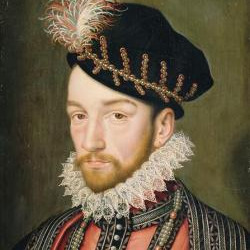
Da qui e dalle altre scuole italiane partiranno numerosi ballerini talentuosi. Verso la fine del '500, con la codificazione di tutte le arti, si parla di una scuola italiana, di cui fanno parte i maestri teorici della danza. Essi si occupano di definire tecnica, etica ed estetica dei danzatori.
Ma già il '400 vede l'inserimento del balletto tra le forme artistiche principali. In quel periodo ci furono molti cambiamenti grazie ai quali si assistette ad una rivoluzione delle corti nobiliari: il ruolo di protagonista passa dal capo politico e militare all'artista. Molti nobili cercano di accaparrarselo offrendo somme di denaro sempre più alte.Ecco i maestri di danza che insegnavano a far apprendere le figure, le posizioni e i passi secondo un sistema di regole. Infine, prendeva forma il primo balletto. ... nel 1581 a Parigi venne rappresentato nel salone del palazzo del Duca di Borgogna il Ballet Comique de la Reine ovvero Circe del coreografo italiano Balthasar di Belgioioso.

Lo spettacolo – un insieme di recitazione, canto e danza – è considerato il primo balletto in assoluto e venne rappresentato a Parigi presso l’Hotel de Bourbon nel Louvre il 15 ottobre 1581, in occasione del matrimonio tra il Duca de Joyeuse e Mademoiselle de Vaudemont (Marguerite de Lorraine). I versi furono scritti da La Chesnay, la musica da Lambert de Beaulieu
le scene disegnate da Jaques Patin
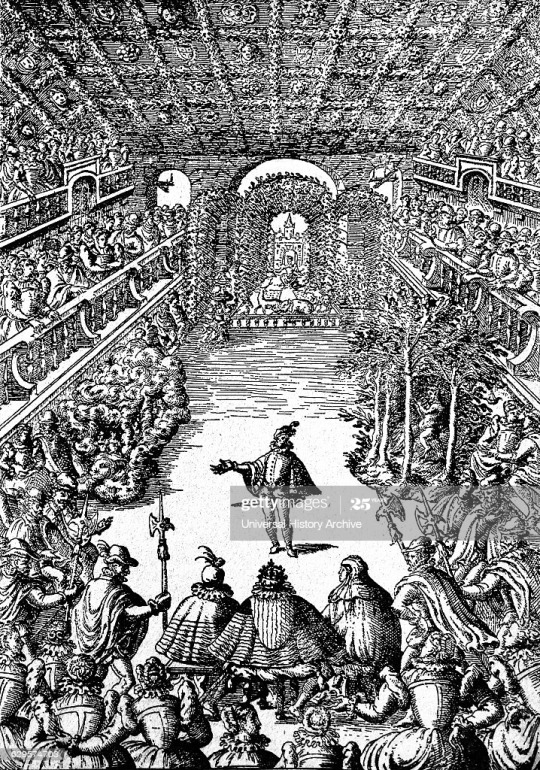
e il responsabile dell’intero allestimento fu Balthasar de Beaujoyeux (Baltazarini di Belgioioso). Durava dalle dieci di sera alle tre e mezza del mattino ed era costituito da quadri che narravano la leggenda di Circe. Il corpo di ballo era composto da dodici Naiadi interpretate da membri dell’aristocrazia mentre Giove, Pallade, Atena, Pan e Mercurio erano i protagonisti accompagnati dalle Driadi, dalle quattro Virtù e da otto Satiri. La coreografia, rigorosamente geometrica, era costituita per lo più da cerchi, spirali, triangoli e quadrati. Lo spettacolo, che ebbe un successo strepitoso e si avvaleva di un grande numero di effetti speciali oltre ad un enorme carro trionfale, costò più di tre milioni e mezzo di franchi d’oro.
La danza divenne allora molto popolare nei palazzi dei nobili e poiché la passione dei nobili che si dedicavano alla danza non poteva più soddisfare una perfetta riuscita dei balletti, fu fondata nel 1681 per volontà di Luigi XIV l’Academie royale de danse con lo scopo di stabilire delle regole per il perfezionamento di quest’arte. A dirigere quell’Accademia fu chiamato Pierre Beauchamp che inventò le cinque posizioni basilari del balletto accademico.

...è necessario interessarsi anche delle sue origini, dove essa è nata, quando, come e perché.... nella Francia del 1600, presso la corte del giovanissimo Luigi XIV, anche noto con il nome di Re Sole. Fu così soprannominato per la sua interpretazione del sole, appunto, ne Le ballet royal de la nuit alla giovane età di 15 anni. Si narra che il balletto iniziasse al tramonto e durasse 13 ore, così che il giovane re danzò tutta la notte ininterrottamente.....uno dei più rappresentativi “ballet de cour”. trae origine e nome dalle attività danzanti che venivano organizzate, in occasione di importanti ricorrenze, da re e nobili.

in quattro parti, iniziava al tramonto e durava tredici ore. Presentava figure mitologiche appartenenti al mondo della notte.Luigi XIV, non ancora quindicenne, vi interpretava diversi ruoli che culminavano nella sua apparizione nel ruolo dell’astro che illumina e feconda la terra: il sole, da cui nacque il soprannome “Re Sole”.

L’imponente scenografia con le sue fantastiche macchine teatrali e i costumi di un esotismo stupefacente furono create da Giacomo Torelli,
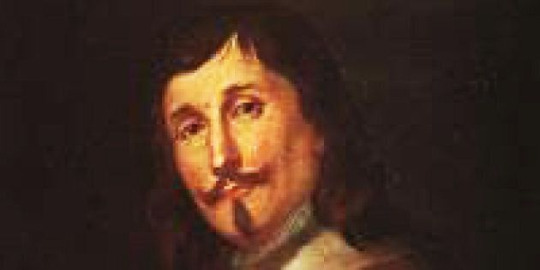
prestigioso artista della grande stagione barocca.
L’autore del testo fu Isaac de Benserade

mentre Pierre Beauchamps
– che diventò poi Maestro di Ballo di Luigi XIV e in seguito sovrintendente dei balletti del re – danzò accanto al sovrano. Parte delle musiche e delle coreografie furono create da Jean-Baptiste Lully (il cui vero nome era Gian Battista Lulli).
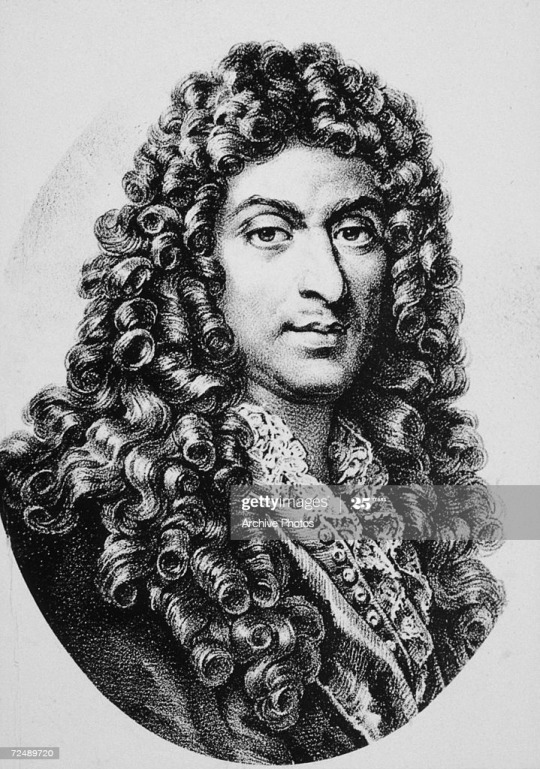
La passione per la danza condusse Re Sole a fondare l’Académie royale de danse nel 1661, attuale Opera di Parigi.

Grazie a tale accademia si cominciò a coniare la tecnica della danza classica così come la conosciamo oggi. Possiamo quindi attribuire a Re Sole la nascita di della danza classica, seppur all’ epoca presentasse delle differenze rispetto alla disciplina odierna. Ad esempio, al tempo non venivano utilizzavate le mezze punte bensì delle scarpe con tacchetto. Queste, unite a pomposi ed ingombranti vestiti limitavano notevolmente i movimenti.... formare i ballerini per le esibizioni. L'attività della scuola fu così attiva e positiva, che nel '700 i ballerini francesi iniziarono ad esibirsi in teatri pubblici.
Durante il Romanticismo, a cavallo tra '700 e '800, il Teatro dell' Opéra di Parigi era un esempio pratico del successo che aveva riscosso il balletto all’epoca .Qui nacque il balletto romantico per eccellenza, la Sylphide. La realizzazione di questo balletto si deve a Maria Taglioni, con coreografie del padre, Filippo. In queste splendide opere andava in scena l'amore impossibile tra un uomo ed uno spirito, ambientato nella suggestiva atmosfera scozzese. Il successo fu incredibile e in molti vollero assistere agli spettacoli.

Con l'inizio del XX secolo la tradizione russa, legata al balletto, si diffonde in tutta Europa. Nel 1909 un impresario, Sergei Diaghilev, intuì le potenzialità commerciali del balletto. Egli divenne fondatore di una compagnia itinerante di danzatori, la quale doveva girare di Paese in Paese per mettere in scena le proprie opere.

Con la morte di Diaghilev, nel 1929, i danzatori e i coreografi che ne avevano fatto parte, tra cui la splendida e famosissima Anna Pavlova, si divisero. Alcuni membri della compagnia fondarono altri gruppi e girarono il mondo.
Famosa la performance de il cigno

0 notes
Photo

4 sirens Ballet Comique de la Reine Lilith
8 notes
·
View notes
Text
History of Ballet (Part 3): Ballet comique de la Reine
In 1581 - eleven years after the Académie was founded - their work came to fruition. The queen’s sister, Marguerite de Vaudémont, was getting married to the Duc de Joyeuse, who was a supporter of the Académie. Fantastic celebrations were planned - seventeen events in all, including tournaments, fireworks, and a horse ballet.
The Académie’s contribution to the celebrations was the Ballet comique de la Reine, which mixed dance, music, and sung verse. It was performed in the Hôtel du Petit-Bourbon in Paris, in a large salle (room). The designated audience was “persons of mark”, but thousands of people crowded into the palace to watch the performance. It began at 10pm, and lasted nearly six hours (this was not uncommon at the time).
The Ballet comique told the story of the enchantress Circe’s defeat by the gods Minerva and Jupiter. It was an allegorical (i.e. symbolic) tale - ballet masters often used thick mythological reference manuals, which laid out the symbolic meanings and characters of the gods and goddesses. (Painters did this, too.)
So there were various layers to the story, which the audience would have understood. One theme was that of reason & faith gaining control over base passions (a condemnation of religious fanaticism). Another theme was the king & queen defeating their enemies; another. Yet another was of resolving conflict, and the triumph of reconciliation and peace: the Ballet comique was performed only nine years after the St. Bartholomew’s Day massacre.
The dance-master was Balthasar de Beaujoyeulx. In the ballet’s preface, he wrote: “And now, after so many unsettling events…the ballet will stand as a mark of the strength and solidarity of your Kingdom…The blush of colour has returned to your France.”
At this time, there were no elevated platform stages, and so the actors performed right up close. Beaujoyeulx was once called “a uniquely creative geometer”, and the dancers’ steps moved in perfectly-formed, measured figures - circles, triangles and squares - showing how number, geometry and reason ordered the universe, and could order human souls.
At the end of the performance, Circe bowed to the king, and presented her magic wand to him. A grand ballet ensued, with the queen and princesses, twelve naiads in white, and four dryads in green, dancing to form and re-form shapes and chains.
Beaujoyeulx wrote later of this grand ballet, “So dexterously did each dancer keep her place and mark the cadence, that the beholders thought that Archimedes himself had not a better understanding of geometrical proportions.”
The Ballet comique de la Reine was the beginning of a new genre in dance - the ballet de cour. Before this, dance performances had been unconstrained and lacking in rules, with dance steps that were more like stylish walking than ballet.
But here, in this new type of dance, the steps conformed to a formalized design and discipline, just as the members of the Académie hoped to bring order and discipline to men. They carefully mapped out the length, duration, measure and geometry of the ballet steps, making sure to be exacting and precise. Nearly a hundred years later, ballet-masters would build on this work to set out an organized system of ballet steps, according to a set of strict geometric principles. We can still see the Académie’s work today in classical ballet.
The Ballet comique didn’t just revolutionize the physical aspects of dance. Because of the Academie’s philosophical goals, ballet gained a serious, almost religious, purpose and character. It was now linked with French intellectual and political life, and this bond would shape ballet for a long time.
However, while the ballet was lauded by many, not all were impressed with it. Some people were angry that the king would waste resources on frivolous entertainment, while the country suffered from civil wars and conflicts. (In fact, Henri III had been criticized for his obsession with the Académie for a long time.) Someone nailed a notice to the door of the room where Henri met with the poets: “While France, crushed everywhere by civil war, is falling into ruin, our King practises grammatical exercises.”
#book: apollo's angels#ballet#ballet history#history#music#music history#france#king henri iii#marguerite de vaudémont#balthasar de beaujoyeulx#académie de poésie et de musique
1 note
·
View note
Text
Ballet essay
Ballet first originated in the Italian renaissance courts. It first began in the 15th century. The renaissance courts was a very good period of culture change and achievement, this began in Italy and it was in the 14th century and lasted up until the 16th century. Ballet spread to France, and it was with the help of Catherine de’ Medici. Where ballet was developed and spread even further under her influence. The first ever formal court ballet was staged in 1573, and it was called ballet des polonais. Originally the ballers were performed by royalty in their rooms and their gardens, which then spread on to performing for other people on royalty.
Academie royale de musique was founded in 1669, it was know as d’opera and it was such a big milestone in history, and this meant that quite a lot of dancer were associated with operas.
Court ballet was ballet performances that were performed in the 15th century up until the 17th century in the courts.
Pierre Beauchamps was the creator of the five foot positions in ballet, Beauchamps was know as the ultimate ballet master.
The first court ballet was performed in rooms and gardens of aristocracy and royalty. The first ever performance was called ballet comique de la reine it was a very well known performance and this was performed in 1581,
In the 18th century women abandoned corsets for floating styled dresses and this emphasised their body and meant that they could perform a great range of movements, they also started to ware flat ballet slippers which showed great flexibility in their feet and women began to develop the trick of rising up onto their demi pointe.
The 18th Century was best known for because of king George, and he was a mad king a lot of the public were going mad as they couldn’t handle the information on new technology after the industrial revolution. But also as this was going off some good things were happening such as pointe shoes were beginning to become invented and more people were started to see dance in different ways and it was expressed massively.
Three famous ballet masters from this period
Hester Booth
Nancy dawson
George Balanchine
Cralos Blasis was born in Naples on the 4th November 1797 Carlo was an Italian dancer and choreographer and is well known for his very rigorous dance classes which these sometimes lasted for hours long. Blasis insisted in his students learning their theory and definitions of all dance steps. some well known pieces were the code of Terpsichore, on the ballet, and theory of the art of dancing.
Here I’ve attached a YouTube video of a ballet from the 18th and 19th century
https://www.youtube.com/watch?v=y94SdIlmjbQ&list=PLdcONZVimCyl2_xh2nBp0TnIlKH3DQNI2
in this video they are wearing shoes with heels on which is very different to now. There movements are very upbeat and jump whereas these days ballet is very gentle and elegant. They are spinning around and jumping from foot to foot a lot of the time. They use their feet a lot and jump around most of the dance.
https://www.youtube.com/watch?v=-EjfGgvsldM
The plie’s and routines have become a lot quicker and shorter, movements have also become more modern and developed and made harder in some places.But all the positioning of the feet has always stayed the same throughout the centuries.
http://www.vam.ac.uk/content/articles/o/origins-of-ballet/
Romantic ballet was a big style of ballet in the early nineteenth century. The dancers were often performed in romantic tutu, these were long tulle skirts that would either go down to their knees or to their ankles. This is why it was called romantic ballet.
Marie Taglioni was from sweden and was a ballet dancer from the romantic ballet era she influenced it a lot, and she became one of the first people to dance on pointe. She also created a new style which was marked by floating leaps. The tutu was created to expose her foot work. She was one of the best ballet dancers anyone had seen, she was well known all over the world

The romantic costumes changed throughout the era starting off as a long dress that went down to the ankles it was very light floaty material, it then progressed onto being a tutu which was also long but it went out more and was a little higher it was very good for showing their elegant movements. The final change to the costume was the tutu but more improved it was higher as it only went to knee height which helped the audience to see their leaps and leg work so much better and clearer.
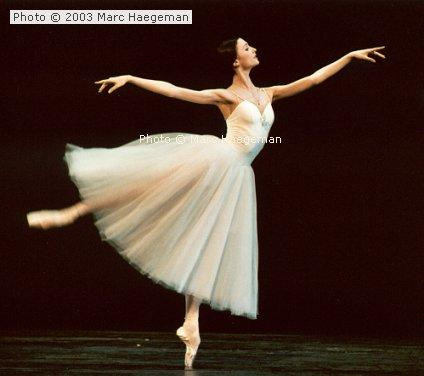
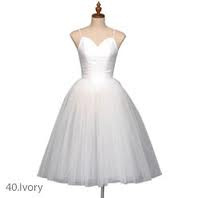
some famous romantic ballets for this period.
LA Sylphide
Giselle
Coppelia
Giselle- I like this performance I think that it is very elegant, and they make the dance look pretty, i can see their is a story through the dance, and I like the fact that their is a story within the music and dance it makes it very intriguing! But something I don’t like about the dance is that quite a lot of the dancers are just in the back and they are still, I feel they need to get involved with the story/dance more if that was possible.
British ballet;
Britain took ballet to a wider audience, they did this by travelling the UK doing tours, they did this during the war time. Swan lake was a very big ballet performance and was well known and is still well known all over the world, but It also influenced many people from the UK to the style of ballet.
Marie Rambert;
Marie was born in 1888, she really wanted to be a professional dancer for many years but her family didn’t agree with this and so they made her study medicine instead but when the first world war began she moved to Britain to teach dance in private homes and schools. Marie married a man called Alex Duke who supported her in her work of dance which meant she went on to owning her own dance school, she has her own company called ballet Rambert and even today it is very well known!
https://www.britannica.com/biography/Marie-Taglioni
http://www.vam.ac.uk/content/articles/r/romantic-ballet/
http://www.rambert.org.uk/about-us/our-history/dame-marie-rambert/
The Royal Danish Ballet and the Imperial Ballet of the Russian Empire were founded in the 1740s and began to flourish, especially after about 1850. in 1907 the Russian ballet turned back to France. in the 20th century styles of ballet continued to develop and spread out throughout the world.
Marius Petipa was a French and Russian ballet dancer and choreographer. Petipa was known to be one of the most influenced ballet dancer in the whole of history. He has performed loads of well known shows such as swan lake and giselle, but at that time them ballets were as successful as they are to this day, they are now the most popular dance pieces ever! Marius invented a performance called La fille du pharon this piece ended up to be one of the most successful pieces of that time. In 1869 he was made the premier ballet master of the imperial theatre.
Michel Fokine was a Russian dancer and choreographer, he was a very talented dancer and musician, he also was a very good painter. Fokine attended the imperial ballet school at a very young age in 1889. Fokine believed that the mime should have only been used when it was necessarily needed, he said that it had no meaning to it unless they expression different emotions throughout their dancing piece. Michel started his last ever piece of ballet which was called Helen of Troy, which was for the American ballet theatre, before he passed away but his piece was finished by a man called David Lichine and the ballet was premièred at Mexico city in 1942.
George Balanchine is a huge influence into Ballet in the USA. Find out how Balanchine adapted ballet into a more modern way and what classical pieces he recreated.
George Balanchine is a ballet choreographer, he was the co-finder of the New York City ballet in1948, and he stayed as its director and choreographer, nearly every ballet company have performed parts of his work. Balanchine presented the company with many well known pieces one being the Nutcracker. He also took a like in to choreographing for Hollywood movies and musicals which were in the Broadway. All of his work never really had a specific meaning, he felt that the dance should be equally as good as the dancer dancing the piece.
http://russiapedia.rt.com/prominent-russians/opera-and-ballet/marius-petipa/
https://www.britannica.com/biography/Michel-Fokine
https://www.nycballet.com/Explore/Our-History/George-Balanchine.aspx
Classical ballet is formal, it is actually the most formal style out of modern and contemporary, they are very strict sticking to there set of rules. Classical ballet is very well known for its movement and technique, and it also includes pointe work. Contemporary ballet include both modern and classical into its movements and techniques, this allows the body to flow into anyway it possibly wants to because there isn’t a strict ballet rule applied to contemporary.
Modern dance was founded in the 20th century, it is a very well known style and it is also known to go against the traditional rules of ballet. Isadora Duncan was the originator of modern dance and is known for using his upper body movements. Martha Graham is another practitioner who had a different outlook on this style of dance, which included contractions, spine/back work and different ways of pointing the feet and the positioning.
Ballerina’s now a days need to be bale to use their skills and adapt to them, they need to be able to be open to all idea’s including new and old ones, they like to look out for exciting things that they haven’t seen before or things that can take to the next level. Bussell thinks that modern dance “21st century stars would do well to learn to be incredibly diverse” He also said that the dancers today need to bringing something to the dance to keep it high in fame and following the history tradition.
William Forsythe was born in 1949, in New York City. He didn’t start dancing until he was in his teens, later on in his life he was given the job of an artistic director of ballet Franfrut which was made into one of the best dance companies of all time.
Methods of training: Research into Cecchetti ballet training and find out who created this method and what makes it different to other methods. What skills can be learnt from this method?
Who is AugusteBournoville? What type of ballet did he create? Discuss the method of training and how he choreographed pieces, e.g. by using his observations. What skills could be learnt from this method?
http://www.vam.ac.uk/content/articles/c/classic-ballet/
https://danceappreciation4.wordpress.com/classical-ballet/
1 note
·
View note
Photo

In 1917, An alluring spy faces a French firing squad – Courtesan, exotic dancer, and WWI spy, Margaretha Geertruida Zelle stands in front of a firing squad after her conviction on espionage charges. Dutch-born but inspired to adopt a new name and persona after living in Java, ‘Mata Hari’ is executed for her role as a German spy. – [READ MORE]
[Also, 1581 | First ballet staged – 1764 | The ‘Capitoline vision’ – 1969 | Millions protest war]
Today in History 10/15 (Mata Hari) read more on Major Mike
#1581#1764#1917#1969#Ballet Comique de la Reine#Catherine de Medici#Edward Gibbon#history#Margaretha Geertruida Zelle#Mata Hari#Moratorium to End the War in Vietnam#The History of the Decline and Fall of the Roman Empire
0 notes
Link
I found it! And it’s on YouTube for free listening!
(Well, the music is on there at least. The original ballet lasted around five hours total, while the album only clocks in at 59 minutes plus whatever foul and depraved ads interrupt it like jeering Guise fanboys.)
#music#early music#ballet comique de la reine#1581#balthasar de beaujoyeulx#joyeuse magnificences#court festivities#henri iii#valois#anne de joyeuse#ballet#16th century#french history#afaik jeering guise fanboys didn't actually interrupt the ballet#but i'm feeling snarky tonight and couldn't resist the comparison
0 notes
Quote
It was a spectacular but intimate affair. Elevated platform stages did not yet exist, and the actors of the "Ballet comique" performed up close in the audience's midst. The story they told was an allegorical tale of the enchantress Circe vanquished by the powerful gods Minerva and Jupiter...It was a tale of passions subjugated to reason and faith (a blunt reference to religious fanaticism), of the king and queen subduing their enemies, of discord resolved and the triumph of reconciliation and peace (the ballet was staged just nine years after the St. Bartholomew's Day massacre). As the dancing master Balthasar de Beaujoyeulx himself wrote in the preface to the ballet, 'And now, after so many unsettling events...the ballet will stand as a mark of the strength and solidity of your Kingdom...The blush of color has returned to your France.' The dances were designed to prove the point. Created by Beaujoyeulx (celebrated by one contemporary as 'a uniquely creative geometer'), they traced perfectly formed figures across the floor in tightly measured steps: circles, squares, and triangles, each demonstrating the ways that number, geometry, and reason ordered the universe and men's souls. At the end of the performance Circe bowed down and presented her magic wand to the king, and a grand ballet unfolded with twelve naiads in white, four dryads in green, and the queen and princesses forming and reforming chains and shapes. 'So dexterously did each dancer keep her place and mark the cadence,' wrote Beaujoyeulx, 'that the beholders thought that Archimedes himself had not a better understanding of geometrical proportions.' Those watching, he hoped, would be 'filled with awe.'
“Apollo’s Angels: A History of Ballet”
#ballet#history#france#académie de poésie et de musique#ballet comique de la reine#balthasar de beaujoyeulx#king henri iii
1 note
·
View note



